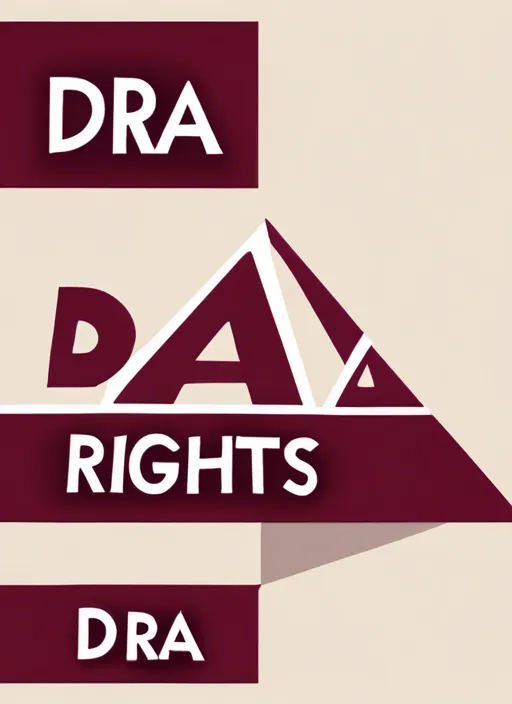
Bridging the Gap: Comparing the Rehabilitation Act of 1973 and the Americans with Disabilities Act (ADA)
Introduction
The struggle for disability rights in the United States has been a journey of incremental progress, marked by landmark legislation that has transformed accessibility and inclusion. The Rehabilitation Act of 1973 (Rehab Act) and the Americans with Disabilities Act of 1990 (ADA) are two pivotal laws that define the rights of individuals with disabilities. While the Rehab Act laid the groundwork by addressing discrimination within federally funded programs, the ADA built on that foundation, expanding protections to the private sector and ensuring broader enforcement. This article explores the key features of both laws, how the ADA expands on the Rehab Act, and their combined role in enforcing disability rights.
Overview of the Rehabilitation Act of 1973
The Rehabilitation Act of 1973 was the first major civil rights legislation in the U.S. to address discrimination against individuals with disabilities. It primarily targeted federally funded programs, requiring them to provide equal opportunities to people with disabilities.
Key Sections of the Rehab Act:
Section 501: Prohibits discrimination in federal employment.
Section 503: Mandates affirmative action by federal contractors.
Section 504: Ensures that individuals with disabilities are not excluded or denied benefits in programs or activities receiving federal financial assistance.
Section 508: Requires federal electronic and information technology to be accessible to individuals with disabilities.
Impact of the Rehab Act: The law set an essential precedent by acknowledging disability rights as a civil rights issue. Section 504, in particular, became a cornerstone for advocating broader protections, influencing later legislation like the ADA.
Overview of the Americans with Disabilities Act (ADA)
The ADA, signed into law in 1990, is often considered a landmark achievement in disability rights. It expanded the principles of the Rehab Act, applying them to nearly all aspects of public and private life, beyond just federally funded entities.
Key Titles of the ADA:
Title I – Employment: Prohibits discrimination in employment and mandates reasonable accommodations for employees with disabilities.
Title II – Public Services: Ensures equal access to state and local government services, including public transportation.
Title III – Public Accommodations: Requires privately owned businesses to provide equal access to goods and services.
Title IV – Telecommunications: Mandates accessible communication services, such as TTY and closed captioning.
Title V – Miscellaneous Provisions: Addresses various aspects, including retaliation and attorney fees.
Impact of the ADA: By applying disability rights to the private sector, the ADA significantly broadened the scope of protections and set enforceable standards for accessibility.
How the ADA Expands on the Rehab Act
While the Rehab Act served as a foundation, its scope was limited to entities receiving federal funding or engaging in federal activities. The ADA addressed these limitations by expanding protections to cover the private sector, local governments, and public accommodations. Below are key ways in which the ADA builds on the Rehab Act:
1. Scope of Coverage:
Rehab Act: Limited to federally funded programs, federal contractors, and federal employment.
ADA: Extends protections to all employers with 15 or more employees, state and local governments, and private businesses open to the public.
The ADA's broader coverage ensures that individuals with disabilities are protected from discrimination in nearly every aspect of daily life, not just in federally linked programs.
2. Public Accommodations:
Rehab Act: Did not mandate accessibility for private businesses unless they received federal funding.
ADA: Requires businesses like restaurants, hotels, theaters, and retail stores to remove barriers and provide reasonable accommodations.
This expansion ensures that individuals with disabilities can access goods and services, promoting greater societal inclusion.
3. Employment Protections:
Rehab Act (Section 501): Focused on preventing discrimination in federal employment.
ADA (Title I): Applies to private employers, ensuring that individuals with disabilities have equal opportunities in hiring, promotion, and workplace accommodations.
By including private employers, the ADA addresses a much larger portion of the workforce, reducing unemployment rates among people with disabilities.
4. Enforcement Mechanisms:
Rehab Act: Relied on compliance reviews and administrative enforcement within federal agencies.
ADA: Introduced additional enforcement avenues, including lawsuits filed by individuals and oversight by the Department of Justice (DOJ) and Equal Employment Opportunity Commission (EEOC).
This shift empowered individuals with disabilities to advocate for their rights more effectively.
5. Accessibility Standards:
Rehab Act (Section 508): Established accessibility requirements for federal electronic and information technology.
ADA: Broadened these standards to include public and private spaces, such as buildings, transportation, and telecommunications.
For example, ADA-compliant facilities must adhere to specific architectural guidelines to ensure accessibility for wheelchair users.
Enforcement and Real-World Impact
Both the Rehab Act and the ADA play vital roles in ensuring the rights of people with disabilities, but their enforcement mechanisms differ.
Rehab Act Enforcement:
Agencies like the Department of Health and Human Services (HHS) oversee compliance for federally funded programs.
Compliance is often achieved through administrative measures and funding conditions.
ADA Enforcement:
The DOJ and EEOC handle complaints and litigation, providing individuals with legal avenues to address discrimination.
Private lawsuits under the ADA have driven significant changes, from improved workplace accommodations to increased accessibility in public spaces.
Examples of Impactful Cases:
Rehab Act Case: In Alexander v. Choate (1985), the Supreme Court ruled on the scope of Section 504, emphasizing that disability rights involve equal access, not guaranteed outcomes.
ADA Case: The Olmstead v. L.C. (1999) decision upheld Title II’s requirement for community-based services, promoting deinstitutionalization and independent living.
Challenges and Criticisms
Despite their transformative impact, both the Rehab Act and the ADA face challenges in implementation and enforcement.
Rehab Act Limitations:
Limited scope and applicability to federally funded entities.
Enforcement depends heavily on federal agency oversight, which can be inconsistent.
ADA Limitations:
Compliance varies widely, particularly among small businesses.
Legal battles can be lengthy and costly, deterring some individuals from pursuing justice.
Resistance from organizations citing financial burdens associated with accessibility modifications.
Collaborative Strength: The Rehab Act and ADA Together
Together, the Rehab Act and ADA create a comprehensive framework for disability rights:
The Rehab Act ensures accessibility and equity within federal programs, serving as a model for broader legislation.
The ADA extends those principles to the private sector and local governments, ensuring consistency and widespread protection.
For example, a university receiving federal funding must comply with Section 504 of the Rehab Act, while a private restaurant near the university must adhere to ADA standards for accessibility. This complementary approach ensures a holistic commitment to inclusion.
Future Directions and Recommendations
To further strengthen disability rights, several steps can be taken:
Enhanced Funding: Increase resources for enforcement agencies to ensure compliance.
Public Awareness: Educate businesses and the public about ADA requirements to promote voluntary compliance.
Technology Integration: Update accessibility standards to address emerging technologies, such as virtual reality and AI.
Collaboration: Encourage partnerships between public and private sectors to share best practices in accessibility.
Conclusion
The Rehabilitation Act of 1973 and the Americans with Disabilities Act are cornerstones of disability rights in the United States. The Rehab Act laid the foundation by addressing discrimination within federal programs, while the ADA expanded these protections to nearly every aspect of public and private life. Together, they represent a commitment to inclusion, accessibility, and equality. While challenges remain, these laws have transformed society’s approach to disability, empowering millions to live with dignity and independence. As society continues to evolve, so too must these laws, ensuring that the promise of equal opportunity remains a reality for all.
Disability Rights Advocate
3 Keswick A
Deerfield Beach, FL 33442
Private Policy
Terms & Conditions

